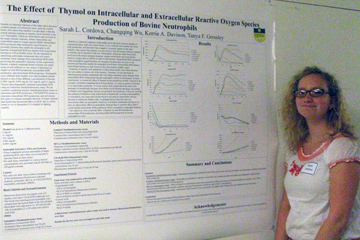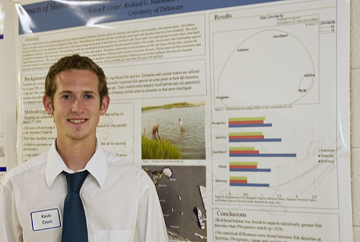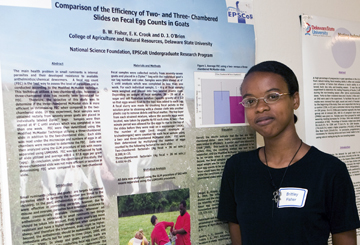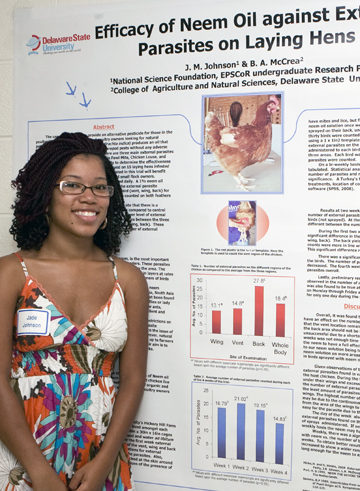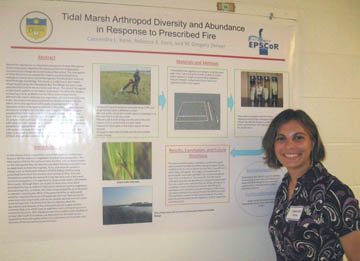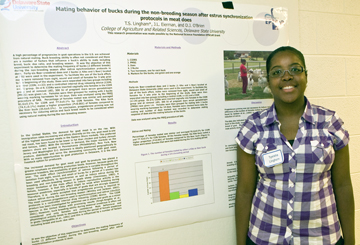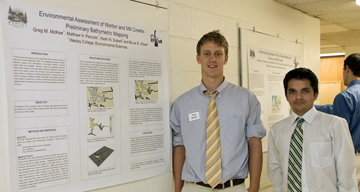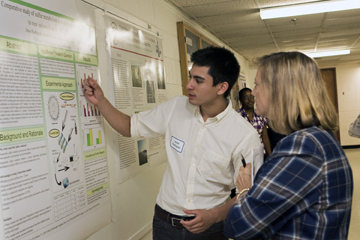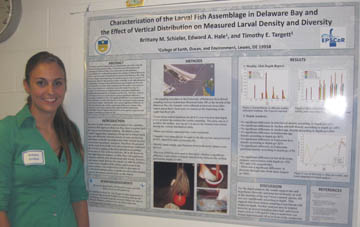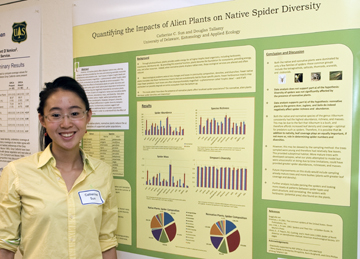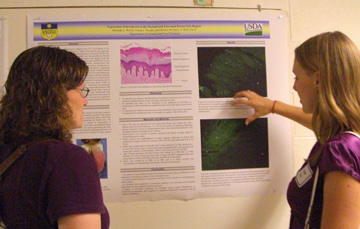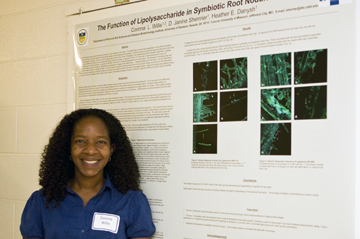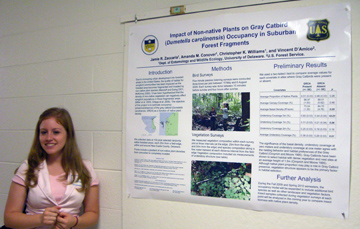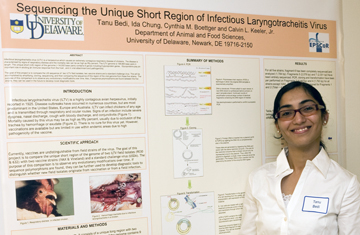 Sequencing the Unique Short Region of Infectious Laryngotracheitis Virus Tanu Bedi, Ida Chung, Cynthia M. Boettger, and Calvin L. Keeler Jr. Department of Animal and Food Science Infectious laryngotracheitis
virus (ILTV) is a herpesvirus which causes an extremely contagious
respiratory disease of chickens. The disease is characterized by
signs of respiratory distress and the mortality rate can be as high as
fifty percent. The ILTV genome is 148,665 base pairs in length. The
unique short (US) region of the genome (~14,000 base pairs) contains 9
genes including 6 glycoprotein genes. Glycoproteins play an
important role in eliciting an immune response from the host , and in
viral attachment and pathogenicity. / / The goal of this project
is to compare the US sequence of two ILTV field isolates, two
vaccine strains and a standard challenge virus. This will be
accomplished by amplifying, cloning, sequencing, and then comparing the
sequence of this region of the viral genome from these five
strains. The purpose of this comparison is to observe any
evolutionary modifications over time. Also, if sequence polymorphisms
are found between the five strains, they can be used in the future to
develop novel diagnostic tools.
|
